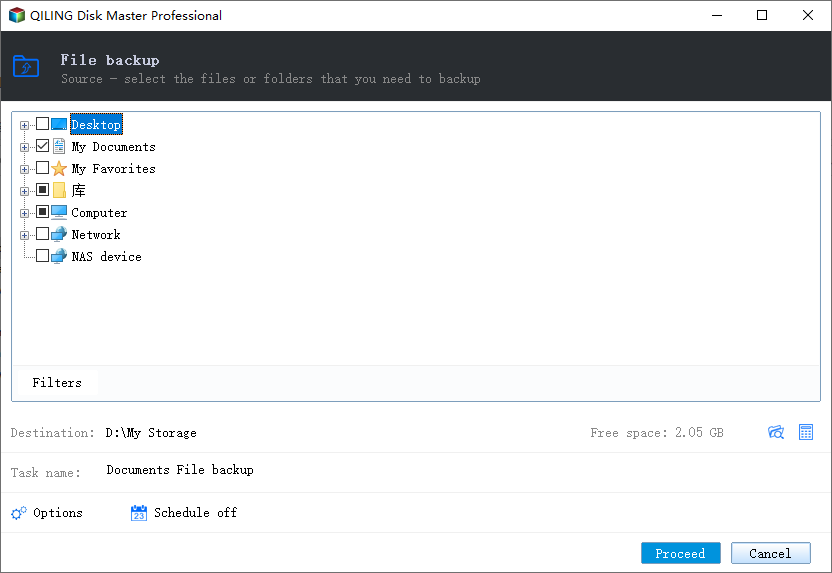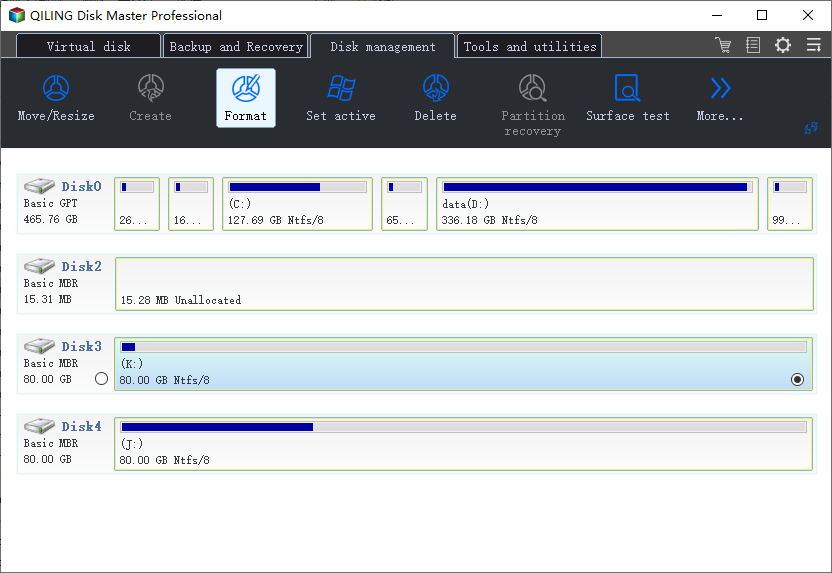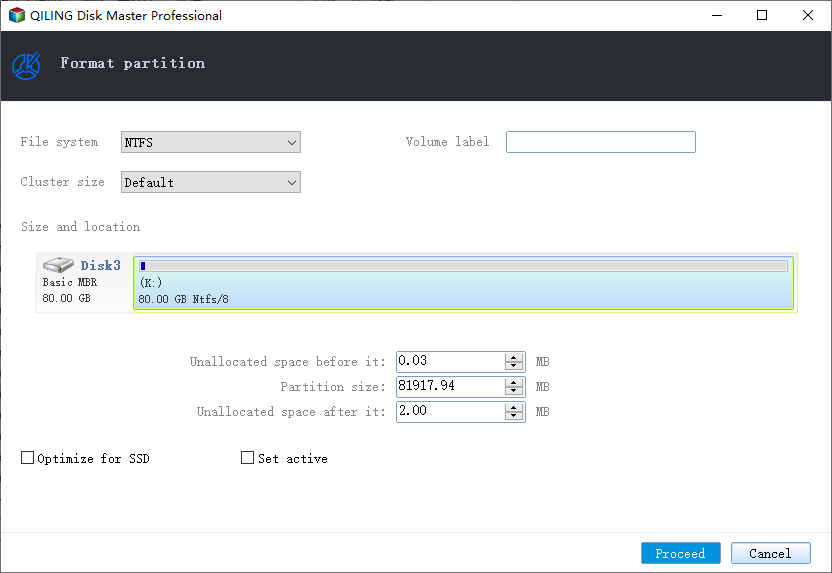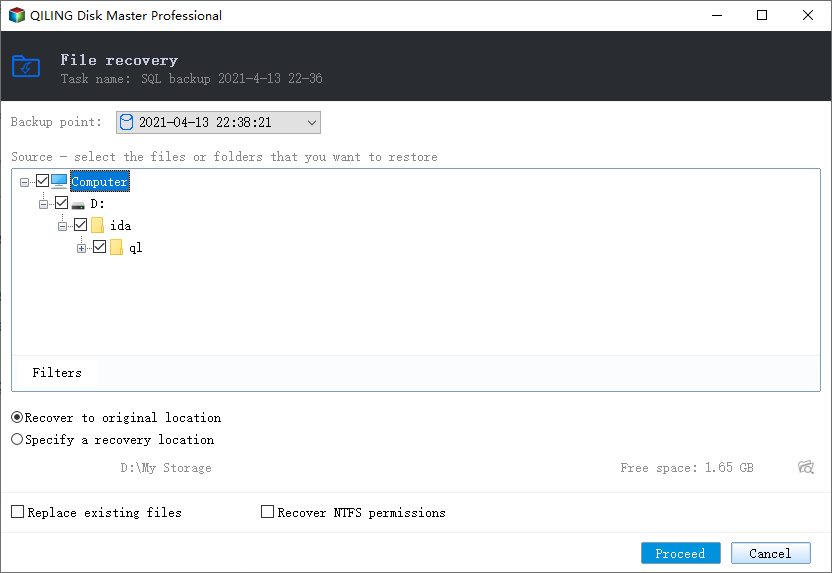What Is Windows File System: Definition & Comparison & Conversion
PAGE CONTENT
Three Primary Windows file systems
To convert a Windows file system to NTFS without formatting or losing data, you can use the built-in "Convert to NTFS" feature in Windows. This feature allows you to convert a FAT32 or FAT16 file system to NTFS without deleting any files or folders.
What Is Windows File System?
Microsoft's new storage system for the next SQL Server release is called Windows File System (WinFS). WinFS serves as a database for structured, semi-structured, and unstructured data, while also providing a programming model that enables developers to communicate data across applications and arrange data in more productive ways.
Three Primary Windows file systems
- NTFS: The primary file system for recent Windows and Windows Server versions offers a wide range of features, including security descriptors, encryption, disc quotas, and rich metadata, and can be combined with Cluster Shared Volumes (CSV).
- FAT32: The FAT32 file system is a 32-bit version of FAT, used on Windows PCs before NTFS, and is suitable for USB drives, flash memory cards, and external hard drives.
- exFAT: Microsoft's upgraded version of the FAT file system, known as exFAT, was introduced in 2006 with Windows CE and Windows Vista (SP1), increasing the maximum file size from 4GB to nearly unlimited.
The choice between NTFS, FAT, and exFAT file systems depends on the device's intended use and compatibility requirements. NTFS, developed by Microsoft, is widely used on Windows systems and offers advanced features, but is not compatible with older operating systems. FAT, introduced by Microsoft, is a legacy file system that is compatible with older systems, but has limitations on file size and number.
| Basis | NTFS | FAT32 | exFAT |
|---|---|---|---|
| History | Windows utilizes the current NTFS file system by default. | FAT32 is a file system that was first introduced with the Windows 95 operating system. | Ex-FAT was introduced with Windows XP and Vista operating system. |
| Compatibility | The file system NTFS works on all versions of Windows, but is read-only on Macs and some Linux distributions. It is unlikely to be supported on other devices, except for Microsoft's Xbox One. | The software is compatible with all versions of Windows, Mac OS X, Linux, game consoles, and nearly any other device with a USB port. | The software works with all versions of Windows and contemporary Mac OS X. |
| Limitations | There are no reasonable file or partition size constraints. |
The maximum file size is 4 GB, and the full partition size is 8 TB. | There are no realistic file or partition size constraints. |
| Application | Users can use it for their Windows system drive and any other internal drives exclusively compatible with Windows. | Use it on detachable drives when you need maximum compatibility with the broadest range of devices, as long as you don't have any files larger than 4 GB. | When you need larger file sizes and partition restrictions than FAT32, and more excellent compatibility than NTFS, use exFAT. If every device that will use the drive supports exFAT, use it instead of FAT32. |
For internal drives, NTFS is recommended, while exFAT is suitable for flash drives. If exFAT isn't supported, consider formatting an external drive with FAT32 instead.
Windows File System Conversion: How to Convert to NTFS Without Formatting or Losing Data
Windows platforms can convert each file system, with NTFS being suitable for internal drives and exFAT for flash devices, but always back up data before performing disk management procedures.
To convert file systems on Windows without losing data, use a third-party partition manager software like Qiling Partition Master instead of relying on the built-in Disk Management feature's "Format" option.
Qiling Partition Master, a comprehensive partition magic software, can fully meet this requirement by converting FAT/exFAT to NTFS without losing any data, making it a suitable solution.
- -ExFAT, FAT16, Ext2/3/4, and different file systems are supported.
- -Converts FAT/FAT32 to NTFS without formatting and data loss.
- -Supports unlimited formatting of 64GB/128GB USB to FAT32.
- Advanced features include partition resizing, disk conversion to MBR/GPT, OS transfer, and more.
Guide: How to Convert FAT32 to NTFS Without Losing Data
Step 1. Install and launch Qiling Partition Master on your computer.
Step 2. Click "File backup" in the "Backup and recovery" page, and select files in FAT32 partition, and click "Proceed".

Step 3. To convert a FAT32 partition to NTFS, select the partition in the Disk Management page and click "Format" to initiate the conversion. If the storage device is a removable one like an SD card or USB flash drive, insert it into your PC and follow the same steps.

Step 4. In the next window, enter the Partition label, choose the NTFS file system, and set the cluster size according to your needs, then click "Proceed".

Step 5. Restore to this partition with "file recovery" in the "Backup and recovery" page.

To Sum Up
Formatting a hard disk to NTFS can be done in three ways, all of which are effective and free. Native Windows programs can format the hard disk, erasing all data in the process. Alternatively, third-party software like Qiling Partition Master can convert the file system to NTFS without affecting existing data, making it a more data-safe option. Each method can handle NTFS formatting without noticeable limits, making them suitable for different needs.
Windows Explorer and Disk Management can't format hard disks to FAT32, especially when the capacity exceeds 32GB, due to a long-standing defect. This means you'll need to use a third-party tool, such as Qiling Partition Master, to format a 64GB SD card to FAT32.
Related Articles
- Diskpart Has Encountered an Error Access Is Denied | How to Fix
- How to Partition A Hard Drive in Windows 10
- Change GPT Disk to MBR Disk Without Formatting
- Partition Manager for Windows 11 Free Download in 2021
- What Is HDD? See The Ultimate Guide of Hard Disk Drive
- Computer Won't Boot? Causes & Fixes for PC Not Turning On [Full Guide]
- One for All Guideline: How to Format/Reformat A Hard Drive
- Partition Magic Software Free Download with How-To Tutorial [Full Guide]